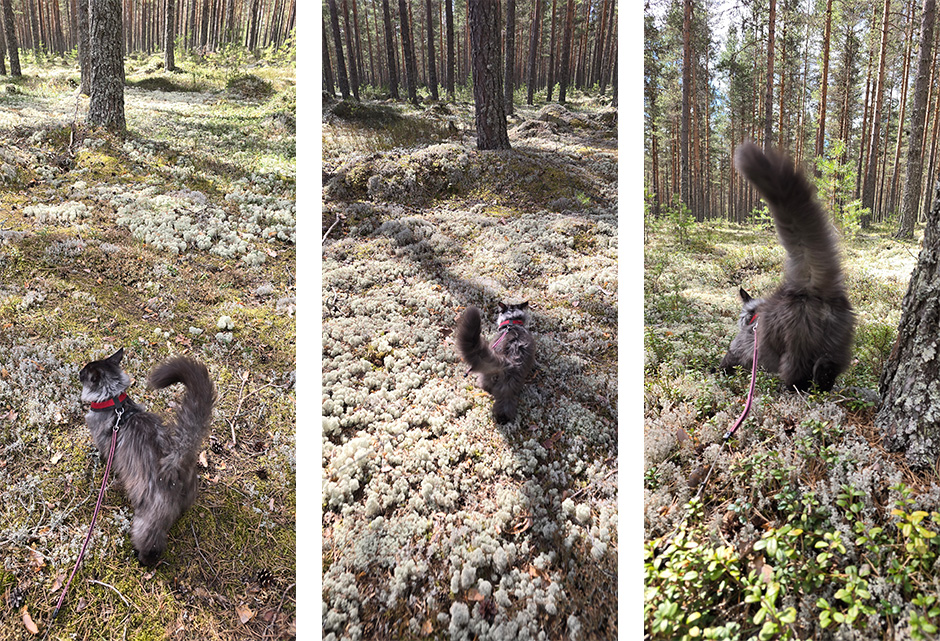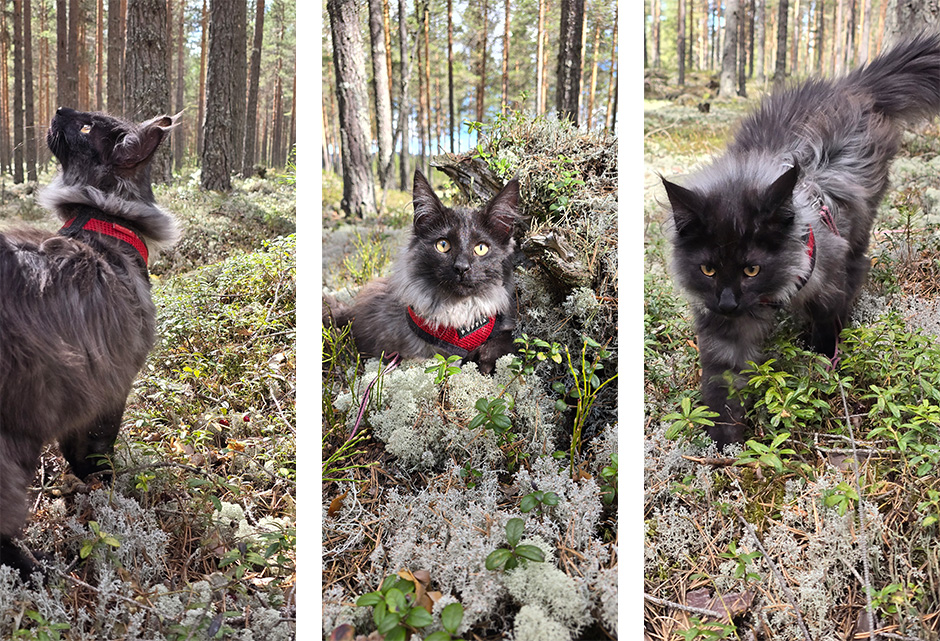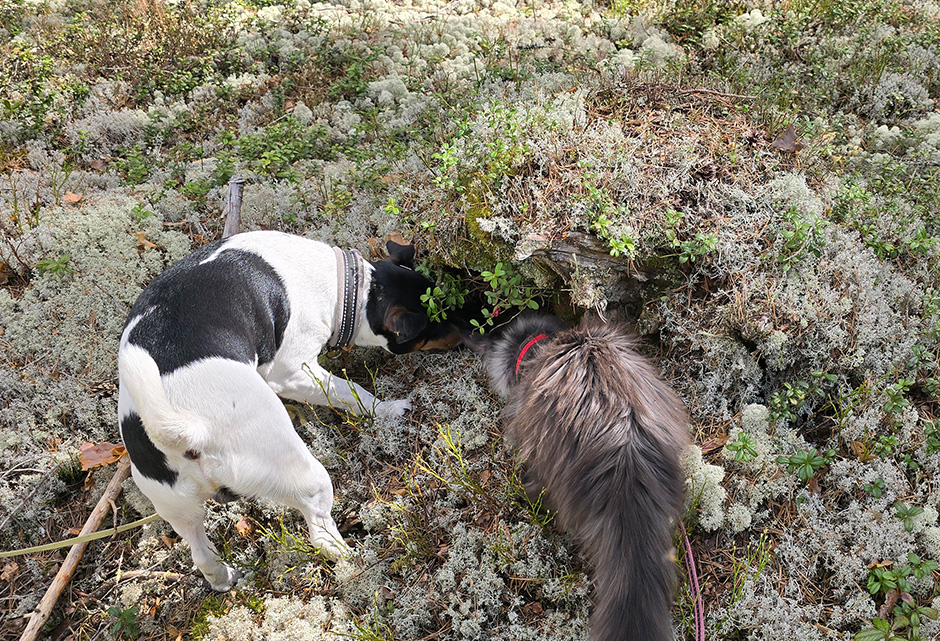
On the Right Track
If your cat is going to join you on walks, it needs to learn to walk in a specific direction—ideally, the direction you’ve planned.
A few important things to remember:
-
Always train in a quiet and undisturbed area.
-
Use a 1.5 to 2 meter (5–6.5 feet) leash.
-
Bring treats or a toy.
-
Use a simple command word—we use “come”.
-
Patience and plenty of time are essential.
-
We use a small flexi leash with a thin line and a small clip. This helps prevent the leash from getting tangled around the cat’s legs.
When teaching the cat to move forward, we show it that doing so loosens the leash—allowing for movement and a reward. If the cat walks into the ditch or another direction, the leash tightens and progress stops. As soon as the cat walks in the desired direction, the leash loosens and the cat receives praise or a treat. Simple and effective!
At first, the cat will likely wander back and forth along the path before it realizes that forward movement happens on the path. The goal is for the cat to walk either beside or slightly ahead of you.
Avoid letting the cat run far ahead, especially before it feels secure. Some cats may become frightened if their owner suddenly runs after them. Since cats are prey animals, this can trigger a flight instinct. The cat might try to escape but be held back by the leash and panic.
Use nature to your advantage. A straight forest path with vegetation on the sides can act as a natural barrier. If you spot a pinecone on the trail, give it a little kick in the right direction—maybe your cat will chase it. A grass blade can be used as a teaser wand, and treats along the path can help motivate. Praise, affection, and treats are important.
Don’t plan long hikes. Stop before your cat is completely exhausted.
On the way back, your cat will often recognize the scents and may walk at a faster pace—but remember: don’t run.
Next step: From path to trail
Once your cat begins walking in the right direction and stops constantly veering into the ditch, you can try a trail. Again, nature helps us. We usually start on soft moss, which is hard for the cat to walk on. After 10 to 100 meters, a trail appears, and the cat will often choose to walk on it—it’s much easier.
We know the area well and choose places where trails appear in the direction we’re headed. When the cat walks nicely on the trail, it gets praise and rewards, of course.
A bit of planning—great success
It’s really not that complicated, but it does require patience and a bit of planning when choosing a training area. Select a place with no people or distractions. If people or dogs suddenly appear, the cat might get scared.
Remember, a cat is a prey animal. It’s natural for it to seek cover in ditches or vegetation. When we train the cat to walk on paths or trails, it moves through open areas and instinctively feels more exposed. If the cat gets scared early in the training, it may become harder to train it for walks later.
That’s why it’s important to stay one step ahead. If there are many unfamiliar sounds, the cat will want to stop and observe from a safe place rather than move forward. I always get the cat used to being picked up during walks or riding in a backpack. If people approach, I lift the cat up to prevent it from getting scared. Remember, strangers may seem tall and intimidating to a small cat, even if they’re friendly. The cat is, after all, outside its territory.
Some cats are fearless and explore the world with confidence—that’s something to enjoy! But I don’t recommend letting your cat greet unfamiliar dogs, even if the owner says the dog is friendly. It’s simply not worth the risk. One scary experience can make your cat fearful for good. There’s no reason for the cat to greet dogs—they’re just random passersby.
A well-behaved dog should be able to pass the cat calmly or sit quietly by its owner while the cat walks past.
Let your cat explore!
Out in nature, let your cat climb rocks or balance on logs. Use the environment—it's perfect for an active outdoor cat to explore!
And here is a video from one of our trips :






